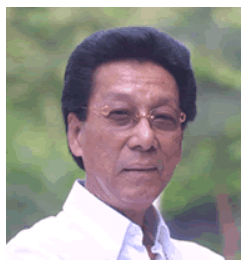MANILA — A tropical escape to the Philippines typically promises sunny skies, island breezes, and warm welcomes. But this April, the “warmth” is breaking records.
As of this week, the country is grappling with one of its most extreme heat waves in recent memory, with heat indices soaring as high as 50°C (122°F) in urban centers like Metro Manila, Dagupan, and Cotabato.
The Philippine Atmospheric, Geophysical and Astronomical Services Administration (PAGASA) has warned that 16 areas are now under the “danger” category, where prolonged heat exposure can lead to serious health risks—including heat exhaustion and heatstroke.
What’s Causing the Heat Wave?
This prolonged spike in temperature is being attributed to a moderate to strong El Niño phenomenon, which reduces rainfall and increases land surface temperatures throughout the region.
According to PAGASA, this is compounded by climate change, which is making extreme heat events in Southeast Asia more frequent and intense.
“The heat we’re experiencing isn’t just seasonal—it’s a climate red flag,” stated a March 2025 update from PAGASA’s Climate Monitoring and Prediction Section.
How Long Will It Last?
The peak of the dry season is expected to continue through late May, with slight relief anticipated by early June as the rainy season sets in.
However, health authorities and local governments are urging caution during this stretch, especially for vulnerable populations and foreign tourists unfamiliar with Philippine heat conditions.
For Tourists: Smart Travel in Hot Weather
Whether you’re wandering around historic Intramuros, diving in El Nido, or sampling street food in Cebu, here’s how to protect yourself:
Top Heat Safety Tips
• Hydrate Often: Drink water regularly, not just when you’re thirsty. Coconut water and electrolyte-rich drinks also help.
• Avoid Midday Heat: Schedule outdoor excursions before 10 a.m. or after 4 p.m. The midday sun is particularly dangerous.
• Dress Light: Wear breathable, loose-fitting clothing, and don’t forget a wide-brimmed hat and sunglasses.
• Rest When Needed: If you start feeling lightheaded, find shade or air-conditioning immediately.
• Know the Symptoms: Signs of heatstroke include confusion, nausea, rapid pulse, and fainting. Seek medical help immediately if you or someone you’re with experiences these.
• Use Sun Protection: High-SPF sunscreen is a must—apply and reapply frequently, especially at beaches or during hikes.
What Local Officials Are Doing
Local governments have adjusted school schedules, shortened working hours for outdoor laborers, and deployed mobile hydration stations in some urban centers.
PAGASA is also issuing daily heat index bulletins, accessible via their official website and social media platforms.
Hospitals and clinics have been placed on alert as cases of heat-related illnesses tick upward.
Is It Still Safe to Travel?
Yes—with proper precautions. Major tourist sites remain open, airlines are operating normally, and resorts are accommodating travelers with cooling amenities.
Travel agencies have begun offering heat-adapted itineraries, and tour operators are increasingly including health advisories in their welcome packets.
Tourists are advised to register with their embassy, carry personal insurance, and monitor weather alerts while in the country.
Staying Cool, Traveling Smart
Even in extreme heat, the Philippines offers its trademark hospitality, breathtaking landscapes, and rich traditions. Smart planning and personal awareness are your best travel companions this season.





